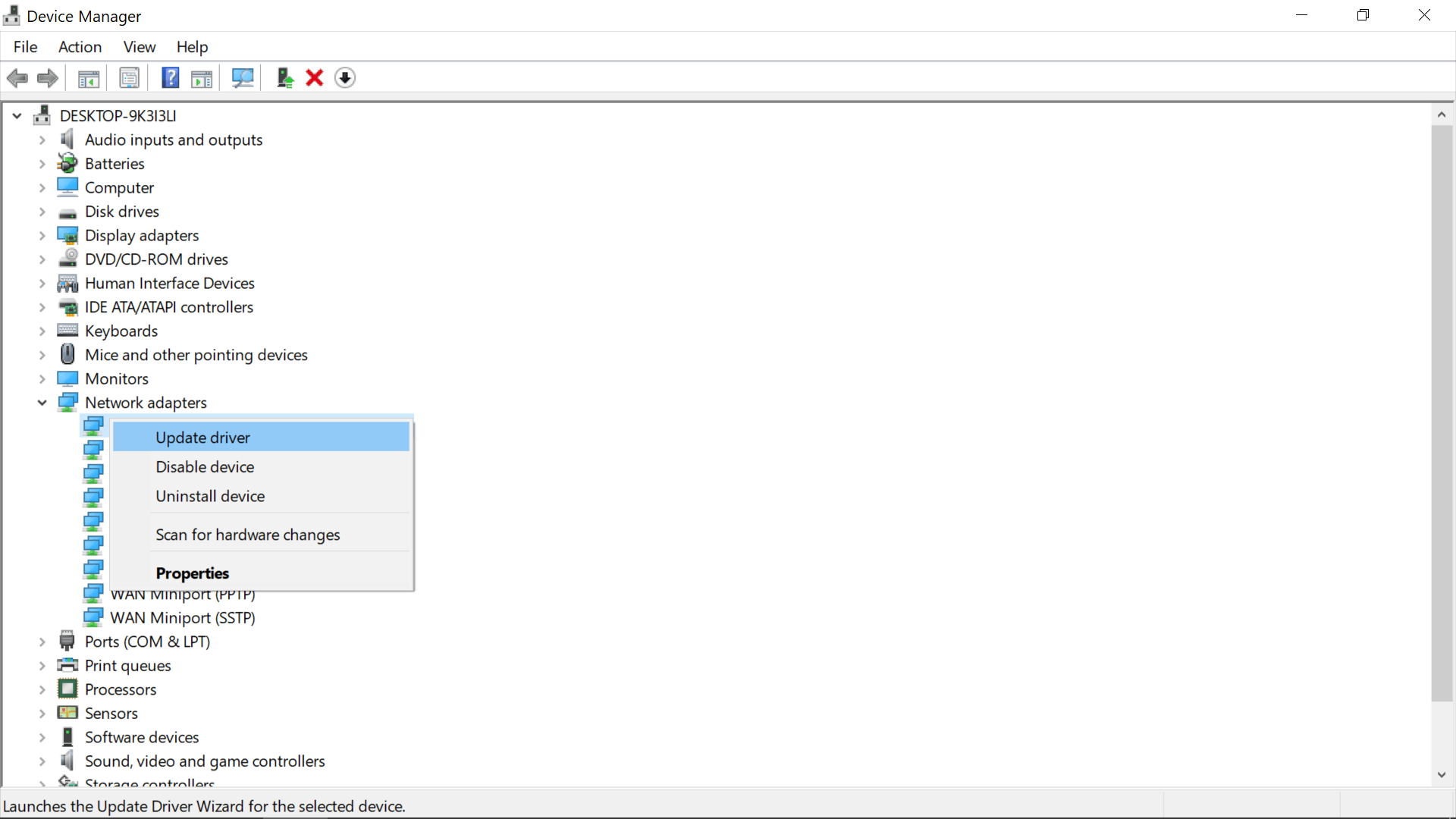Even though the wireless adapter is connected to the computer, it may not have been recognized as a network device by the computer. In this step, you will check whether the device was recognized properly.
- If a wireless device is listed, continue on to the Device Drivers step. If a wireless device is not listed, the next steps you take will depend on the type of device that you use. Refer to the section below that is relevant to the type of wireless adapter that your computer has ( internal PCI, USB, or PCMCIA ).
- Popular ZTE Wi-Fi devices. WiMAX Bus Driver. ZTE Mobile Broadband Diagnostics Port. Remote NDIS based Device. ZTE Mobile Broadband AT Port. ZTE Mobile Broadband Modem. ZTE Mobile Broadband Network Adapter. ZTE Mobile Broadband NMEA Port. ZTE Composite ADB Interface.
Open a Terminal window, type lshw -C network and press Enter. If this gives an error message, you may need to install the lshw program on your computer.
Look through the information that appeared and find the Wireless interface section. If your wireless adapter was detected properly, you should see something similar (but not identical) to this:
If a wireless device is listed, continue on to the Device Drivers step.
If a wireless device is not listed, the next steps you take will depend on the type of device that you use. Refer to the section below that is relevant to the type of wireless adapter that your computer has (internal PCI, USB, or PCMCIA).
Having an issue with your display, audio, or touchpad? Whether you're working on an Alienware, Inspiron, Latitude, or other Dell product, driver updates keep your device running at top performance. Step 1: Identify your product above. Step 2: Run the detect drivers scan to see available updates. Step 3: Choose which driver updates to install. For USB wireless devices, this might be as simple as unplugging the USB wireless receiver, waiting for about 10 seconds, and then plugging the USB wireless receiver back into the USB port. The wireless connection should be reestablished. Check the device. If the device doesn't appear to work at all (no lights appear on the device when it’s.
Internal PCI adapters are the most common, and are found in most laptops made within the past few years. To check if your PCI wireless adapter was recognized:
The copying of the software drivers, except for a reasonable number of back-up copies is strictly prohibited by international law. It is forbidden by international law to provide access to the software drivers to any person for any purpose other than processing the internal data for the intended use of the software drivers.
Open a Terminal, type lspci and press Enter.
Look through the list of devices that is shown and find any that are marked Network controller or Ethernet controller. Several devices may be marked in this way; the one corresponding to your wireless adapter might include words like wireless, WLAN, wifi or 802.11. Here is an example of what the entry might look like:
If you found your wireless adapter in the list, proceed to the Device Drivers step. If you didn’t find anything related to your wireless adapter, see the instructions below.
Wireless adapters that plug into a USB port on your computer are less common. They can plug directly into a USB port, or may be connected by a USB cable. 3G/mobile broadband adapters look quite similar to wireless (Wi-Fi) adapters, so if you think you have a USB wireless adapter, double-check that it is not actually a 3G adapter. To check if your USB wireless adapter was recognized:
Open a Terminal, type lsusb and press Enter.
Look through the list of devices that is shown and find any that seem to refer to a wireless or network device. The one corresponding to your wireless adapter might include words like wireless, WLAN, wifi or 802.11. Here is an example of what the entry might look like:
If you found your wireless adapter in the list, proceed to the Device Drivers step. If you didn’t find anything related to your wireless adapter, see the instructions below.
PCMCIA wireless adapters are typically rectangular cards which slot into the side of your laptop. They are more commonly found in older computers. To check if your PCMCIA adapter was recognized:
Start your computer without the wireless adapter plugged in.
Open a Terminal and type the following, then press Enter:
This will display a list of messages related to your computer’s hardware, and will automatically update if anything to do with your hardware changes.
Insert your wireless adapter into the PCMCIA slot and see what changes in the Terminal window. The changes should include some information about your wireless adapter. Look through them and see if you can identify it.
To stop the command from running in the Terminal, press Ctrl+C. After you have done that, you can close the Terminal if you like.
If you found any information about your wireless adapter, proceed to the Device Drivers step. If you didn’t find anything related to your wireless adapter, see the instructions below.

If your wireless adapter was not recognized, it might not be working properly or the correct drivers may not be installed for it. How you check to see if there are any drivers you can install will depend on which Linux distribution you are using (like Ubuntu, Arch, Fedora or openSUSE).
To get specific help, look at the support options on your distribution’s website. These might include mailing lists and web chats where you can ask about your wireless adapter, for example.
Drivers Wireless Data Device Port Devices Download
USBtoWIFI Bi-Directional
Looking for Distributors
File Transfer over USB and WIFI
